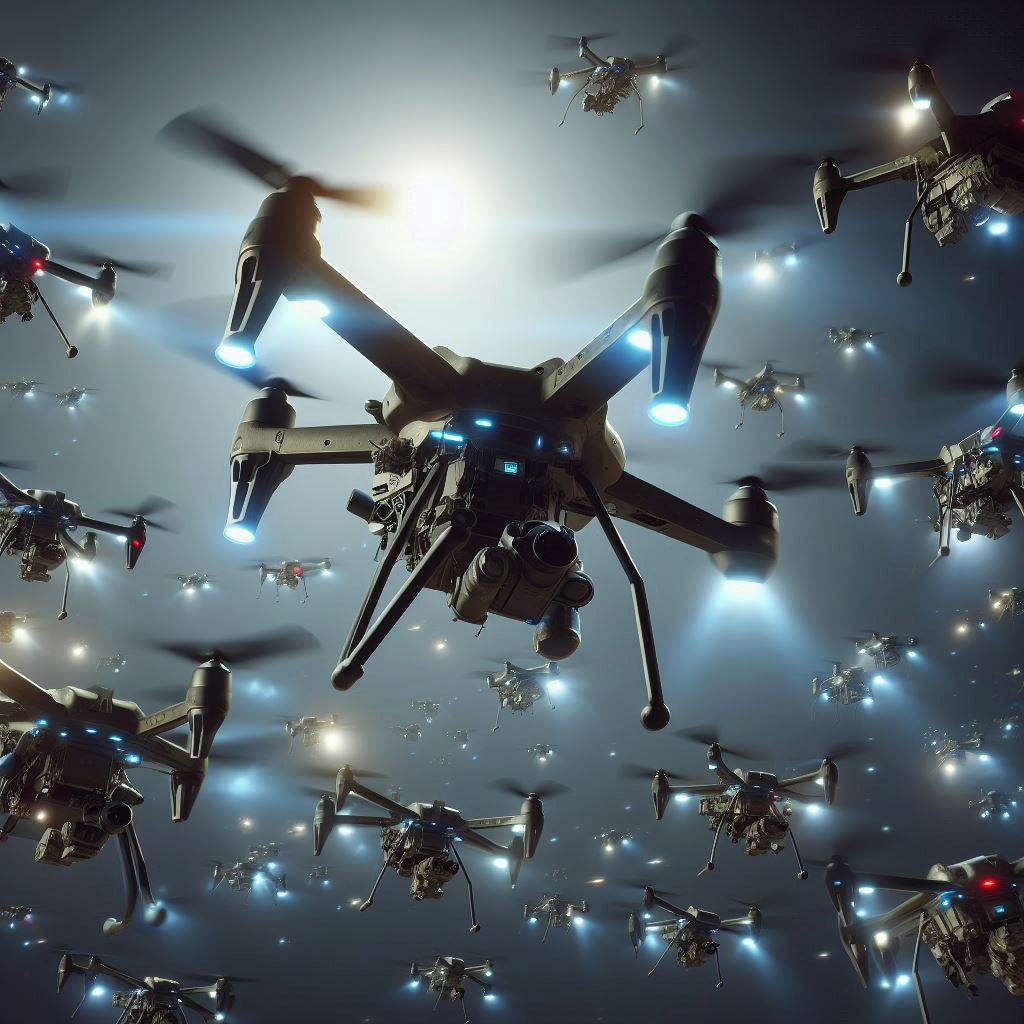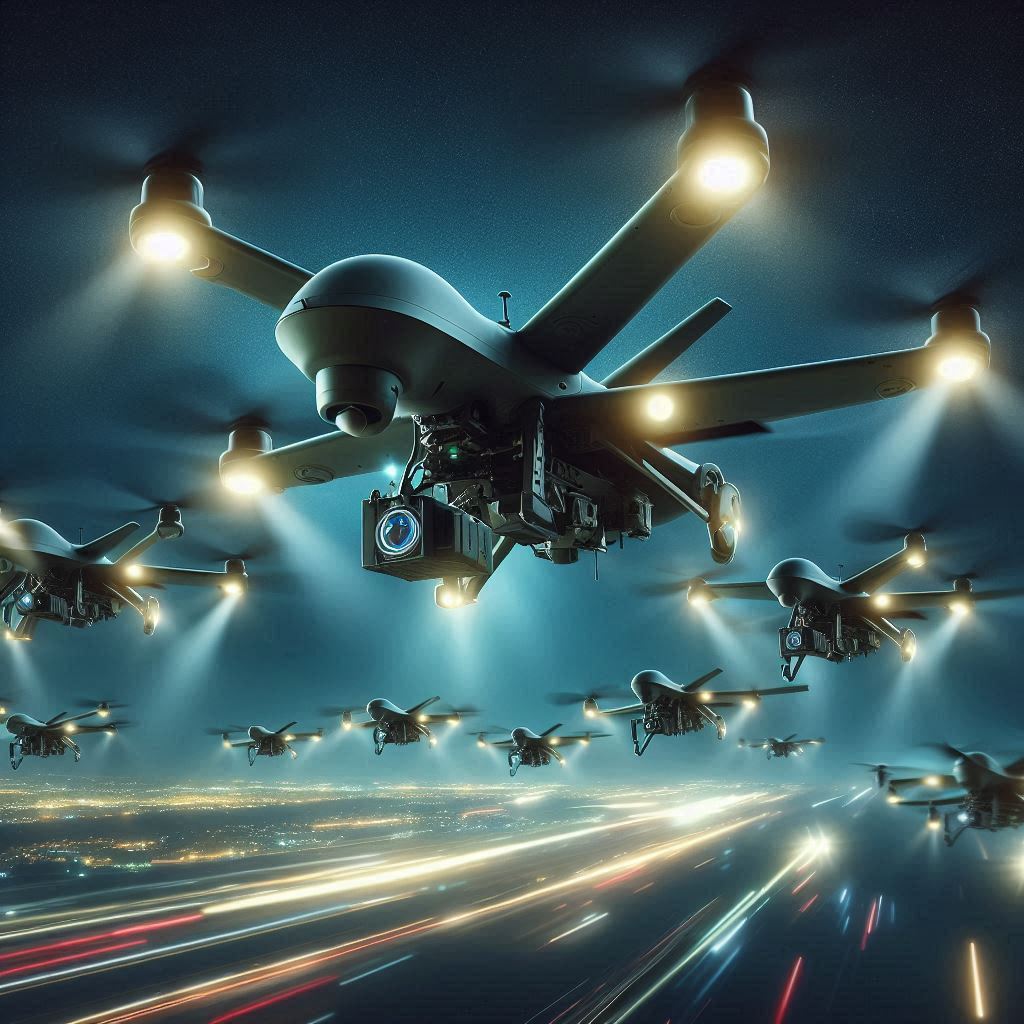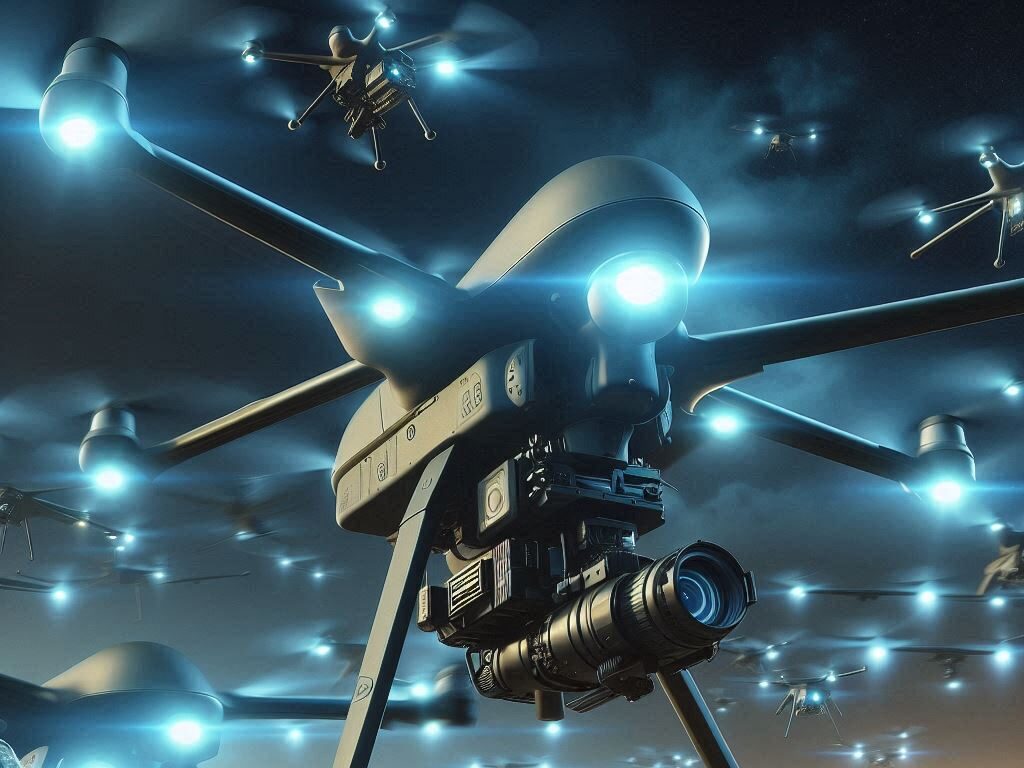Can military drones be used at night
In the ever-evolving landscape of military technology, one question that often arises is: Military drones are equipped with several features and gadgets, and among them is the capacity to see during the night. This article analyzes nighttime UAV operations and examines the technologies that let uncrewed aerial vehicles work during the night. This paper aims to reveal the strengths, weaknesses, and effects that military drones demonstrate at night, considering their advantages, disadvantages, and influence on war and surveillance.

Night Vision Equipment: The Advancement Ever in a Glance
Before examining the possibilities of how military drones can see at night, we first have to look at the history of night vision technology. There are three early generations of night vision devices: the image intensifier, which increases the amount of light on the image and passes it to the phosphor screen. However, today’s military-weaponized drones have much more complicated systems for nighttime operations.
Infrared Sensors:
The Eyes in the Dark, which refer to monitoring and supervision by the authority, are also not attractive.
Night operation is one of the military drone capabilities that have become possible due to applied technologies, one of which is infrared (IR) sensing. These devices are thermographic devices that capture the heat resonance of objects and people; the signals are then compiled into an atmospheric map that can be analyzed by operators. This is useful when the hunter is in search of something or somebody to attack in a pitch-black environment.
Pros of IR technology in military drones:
Effective in zero-light conditions
- Possibly useful in finding targets that can easily blend with their surroundings or are well concealed.
- Gives the reader relatively vivid pictures of objects emitting heat.
Cons:
- It can be influenced by changes in weather near and far.
- Can not see through walls or highly insulated objects and surfaces.
Superiority and Optimization of Optics
Military drones capable of seeing at night are usually equipped with the most advanced optoelectronic systems and image analysis algorithms. These technologies operate in symbiosis to further and sharpen the visual information picked up by the drone’s payload, with a view to orienting operators to the conditions on the ground.
Key features:
- High-quality lenses and night-vision devices
- Real-time image enhancement software
- Filtering algorithms to get better vision during the night.
Synthetic Aperture Radar (SAR)
SAR systems use radio waves and the processing of backscattered signals to give the ground two- and three-dimensional reflectivity, irrespective of illumination and weather circumstances.
Benefits of SAR in nighttime drone operations:
- Creates photo-like images in complete darkness.
- It can pass through the ranks of clouds, lighting, and shower basics.
- Can point out small changes in the terrain with the help of interactive and other additional methods.
AI and its Application
Looking at how military drones see at night, it is critical to address the issue of artificial intelligence (AI). Drones themselves provide a stream of sensor data for AI algorithms that can easily ascertain probable threats or areas of interest in the shortest time possible.
AI applications in nighttime drone operations:
- Automated target recognition
- Condition monitoring and maintenance of the drone systems
- Interpolations help in navigation and avoiding obstacles in regions of low illumination.
Advantages of Having Night-Capable Military Drones:
Military drones have two primary benefits when it comes to surveillance during the night on the battlefield. These concepts are not limited to surveillance alone but are helpful in a number of contexts within militaries.
Covert Operations
Armed forces drones with night vision capabilities are very useful for executing secretive missions. Their stealth allows them to conduct surveillance and track targets while remaining unseen, which is quite a trump card.
Search and rescue
During disaster cases or in warfare, drones with night vision functions can help find lost workers or civilians and rescue them at night when it is pitch dark.
Border Surveillance
In this sense, friendly and large countries with large territories should employ night-operation-capable UAVs to patrol border zones and identify smuggling or illegal crossing of border persons at night.
Force Protection
Military UAVs that can provide vision at night enhance the capability of the ground forces to identify the quilt of surprise attacks and early identify the likely movement of the enemies.

Challenges and limitations
The use of military drones to apprehend criminals who operate at night has its merits but has some difficulties. Knowledge of these restrictions should never be underestimated or overlooked when implementing or running such a solution.
Battery Life
Sensitive sensors and data processing units demand power, which can be a hindrance to flight duration for small drones when in use at night.
Signal Interference
In big cities or where establishments with electronic warfare capacities are potential threats, the signals that act as commands to such drones and those through which data is relayed can be jammed.
Ethical Concerns
In the case of nighttime operations, military uncrewed aerial vehicles involved in surveillance also raise privacy issues due to the possibility of spying on civilians.
Cost Considerations
The cost of military drones used at night also greatly depends on their size and abilities, as well as their purpose. Tiny tactical UAVs might cost tens of thousands of dollars, whereas large, long-lingering ones may cost millions. Most of the costs associated with military drones are attributed to the complex sensors and systems that enable the vehicle to see at night.
Factors affecting the price of night-capable military drones: Factors affecting the price of night-capable military drones:
- Sensor quality and capabilities
- Airframe size and materials
- Onboard processing power
- Communication systems
- Endurance and range
Future Developments
Future developments in the technology will follow, and hence, the efficiency of military drones for nighttime viewing will also increase. The current innovations aim at finding materials that allow the development of more sensitive sensors to improve the energy supply system and create even more complex AI algorithms that can increase the effectiveness of nocturnal flights by unmanned vehicles.
Potential future advancements:
- A next-gen technology for sensitivity like never before
- Enhancements in multisensory fusion will increase the quality of imagery.
- Ant colony for synchronization of movements at night
- More sophisticated stealth attributes to the UAVs to ensure they are even more invisible to enemies.
Conclusions about Can military drones be used at night
Therefore, the answer to the question, “Can military drones see at night?” is positive. Current models of military drones use infrared detection, superior optics, synthetic aperture radar, and artificial intelligence that enable them to work well in low-light or no-light environments. These technologies offer many tactical gains, including sneaking, spying, searching, and rescuing.
As we move into the future, this area of interest in military drones will advance in one way or another, which will create both a positive and negative impact on the way that military aspects and politicians view the use of drones capable of seeing at night. While advanced systems are expensive, their great capacity to save precious lives and collect important intelligence makes them vital in modern warfare.
Thus, the question is whether military UAVs can be seen at night and how this strength will be employed to define tomorrow’s warfare and international relations. That was all about Can military drones be used at night.

FAQs about Can military drones be used at night
Is there any defensive strategy against the military UAVs with night vision capabilities?
There are countermeasures like signal jamming, laser dazzlers, and thermal features of object camouflage. But this is where the advancement of drone technology comes into play, and it finds equal counterparts in avoiding anti-drone measures.
Do military drones that can see at night differentiate between a civilian and an enemy soldier?
As much as sophisticated AI and high-res sensors aid in target recognition, the differentiation of targets consisting of civilian populations and armed enemies is difficult and can only get worse at night. This is why, in important cases, the final decisions are always made by human operators.

